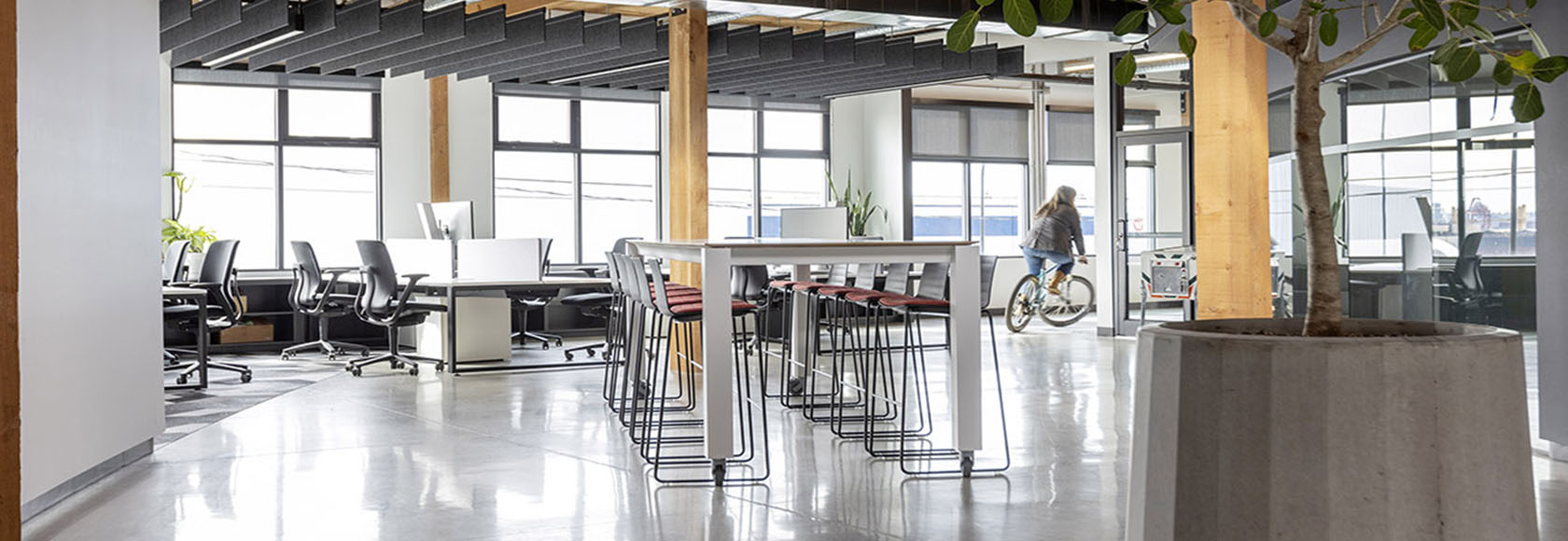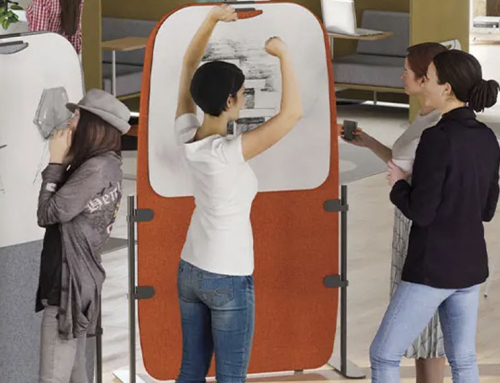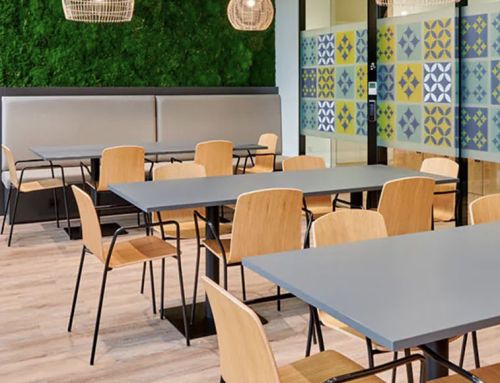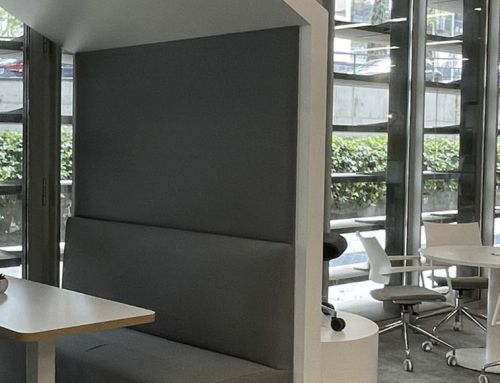The WELL Building Standard® is not a trendy certification. Offices serving the wellbeing of the people who work in them are becoming an increasingly widespread new paradigm.
The transformation of workspaces into healthy offices has led architects and companies to prioritise the effect of their buildings on the people who work inside them.
We spend most of our time inside buildings. They are a fundamental part of the environment in which we live, work and socialise, so they necessarily have a significant impact on our health and well-being.
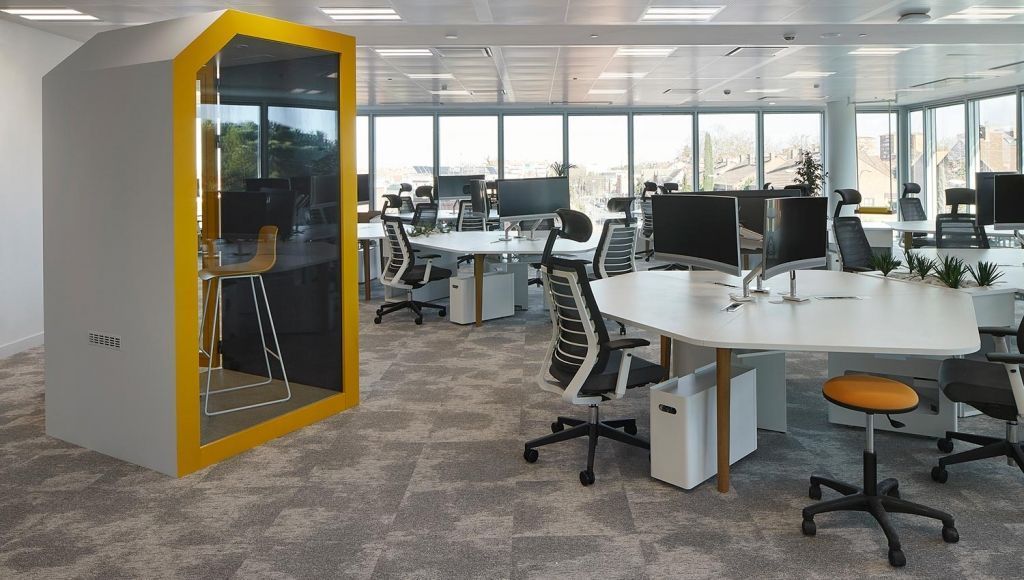
Roche Gis offices
Benefits of a healthy office
Promoting healthy work environments has substantial benefits for all parties: occupants can enjoy healthier, more attractive and inspiring spaces; organisations find intangible positive values such as brand image, as well as measurable ones associated with designing more productive workspaces.
Healthy employees with healthy lifestyles are more productive and have lower absenteeism rates. In addition, healthy offices have proven to be a very useful tool in retaining talent, especially that of the younger generation, who are increasingly taking into account issues related to quality and well-being at work when choosing a job offer.
As a result, more and more companies around the world are turning to the WELL Building Standard to prioritise the health and safety of their people, maximise real estate value and optimise the human and social capital performance of their business.
What is the WELL Building Standard?
The WELL Building Standard is the world’s first building standard focused exclusively on human health and well-being.
Many certifications, including BREEAM and LEED, focus on the building’s impact on the environment, while WELL focuses on its impact on people’s health and well-being.
The WELL Building Standard goes beyond the design and performance of the building and assesses other elements related to its use to determine whether or not it is an optimal living space. In other words, it is not only linked to the construction of the building, but also to its management, with measures related to HR policies or wellness strategies, such as the promotion of healthy eating and exercise.
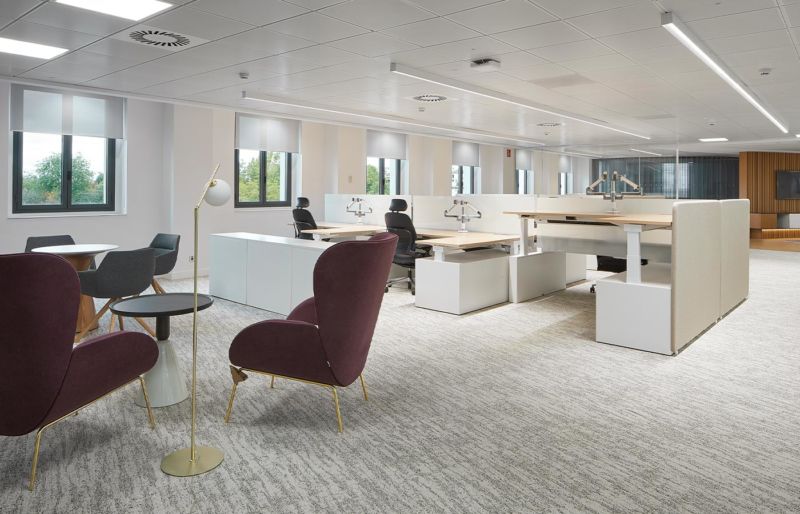
Latham & Watkins offices
The 10 action areas of the WELL Building Standard
The new version of the WELL Building Standard consists of 10 areas of action, each including a series of measures: air, water, food (establishing healthy food choices and promoting healthy eating), lighting, movement (promoting and incorporating activities that allow an active life), thermal comfort, acoustic comfort, materials, mind (with the incorporation of corporate wellness policies) and community, i.e. the creation of a culture of health and an inclusive community committed to these values.
Can Ofita help to achieve WELL?
The answer is yes, without a doubt, through our office furniture and especially on three fronts: comfort, the quality of its materials and its ability to facilitate the movement of people.
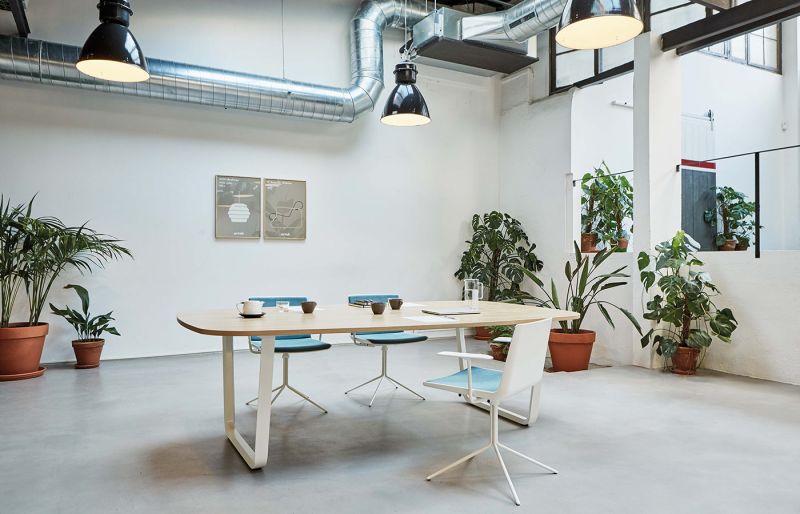
Non-polluting and non-hazardous materials
First of all, let’s talk about its materials. Sources of indoor air pollution fall into several categories, one of which is “building materials and furnishings”. It includes pollution from items such as plywood, paint, furniture and floor or wall coverings. Against these pollutants:
- Ofita furniture upholstery boards comply with low formaldehyde emission classification standards, all of them being category E1.
- 65% of the upholstery used by Ofita is certified: OEKO-TEX100 or European Ecolabel; Indoor Advantage TM Gold certified; Cradle to Cradle Certificated®… In addition, we incorporate new fabrics, such as Quest made from recycled PET in collaboration with Seaqual Initiative to combat pollution.
- All paints used in Ofita products are classified as NON-hazardous according to Regulation 1272/2008 (CLP).
- The adhesives and glues used in Ofita products are PUR glues and there are no Volatile Organic Compounds (VOC) present in these products.
- The plastics used do not use flame retardant treatments containing more than 0.1% by weight (w/w), nor phthalates containing more than 0.1% by weight (w/w).
- 20% of the steel used in the products is recycled, as well as 50% of the aluminium used…
Ofita: air quality, comfort and ergonomics
All Ofita furniture is made with these materials, among others that are equally recommended and certified. But we also have products that contribute specifically to the achievement of WELL due to their direct impact on some of the 10 areas of action mentioned, such as Vetrospace cabins that guarantee optimum air quality inside. Or the separators and panels, among other Ofita products, whose design and manufacture prioritise the acoustic comfort of the space and the protection of people.
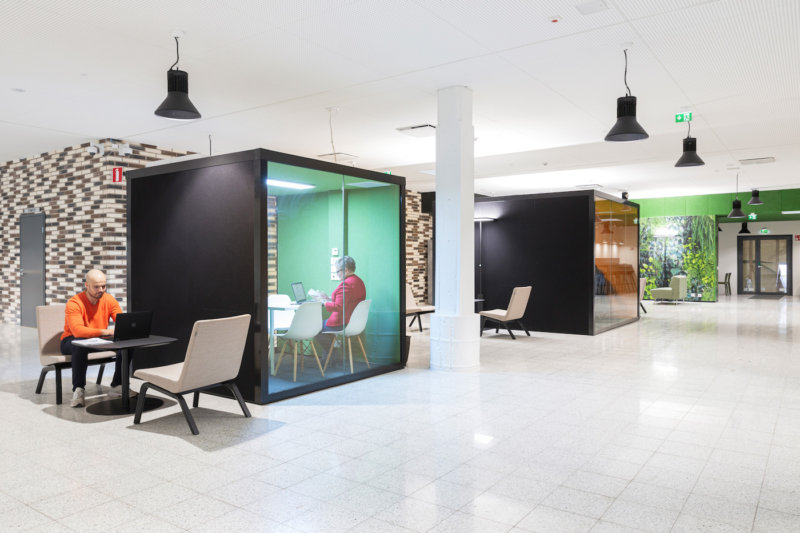
Vetrospace
Also noteworthy is Ofita ZERO COVID furniture, which improves the health of workers by preventing infection by viruses or bacteria thanks to Umbrella Zero, a surface treatment with virucidal and bactericidal properties, which destroys both Sars Cov2 (Covid) type viruses and E.coli type bacteria.
In addition, Ofita works especially hard on the ergonomics of the workstations, which has a very positive impact on the comfort of its users. With its ergonomic design, office furniture is no longer just a simple element, but a tool that improves the well-being of its users.
Working in movement
Ofita furniture also offers the possibility of alternating moments in which the activity is carried out standing up and, at the same time, sitting down. In this way, different postures are exercised and movement is encouraged, which is key to well-being. Thus, we have different height-adjustable tables.
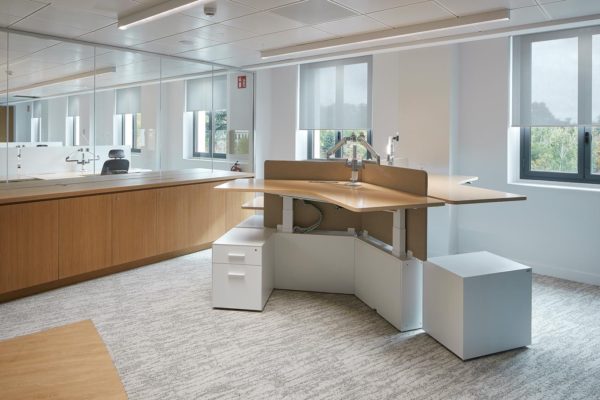
We also offer new, more dynamic, flexible and informal furniture programmes that facilitate collaboration and communication and, of course, comfort and convenience, such as Meet UP! or Forthink.
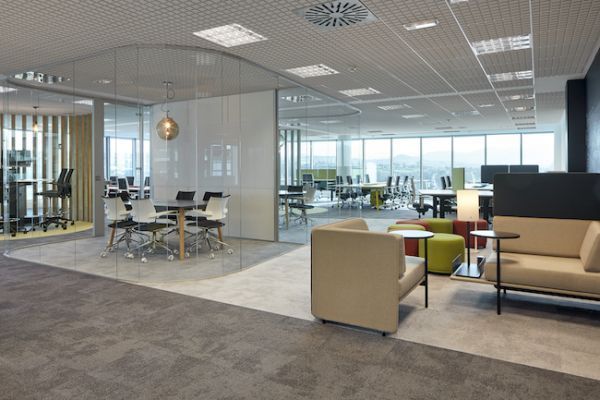
Meet UP! in the EDP offices
The quality of the air we breathe, the design of the lighting, spaces and furniture, the thermal and acoustic comfort or the capacity of a space to encourage physical exercise, contact with nature and good eating habits, is what makes offices healthy places to work.
At Ofita, through our products, we can help you implement the WELL Building Standard.
For us, one thing is clear: let’s put the user’s health at the centre of the design, because this is the only way to achieve more motivated, healthier and happier workers and, therefore, more productive companies.
